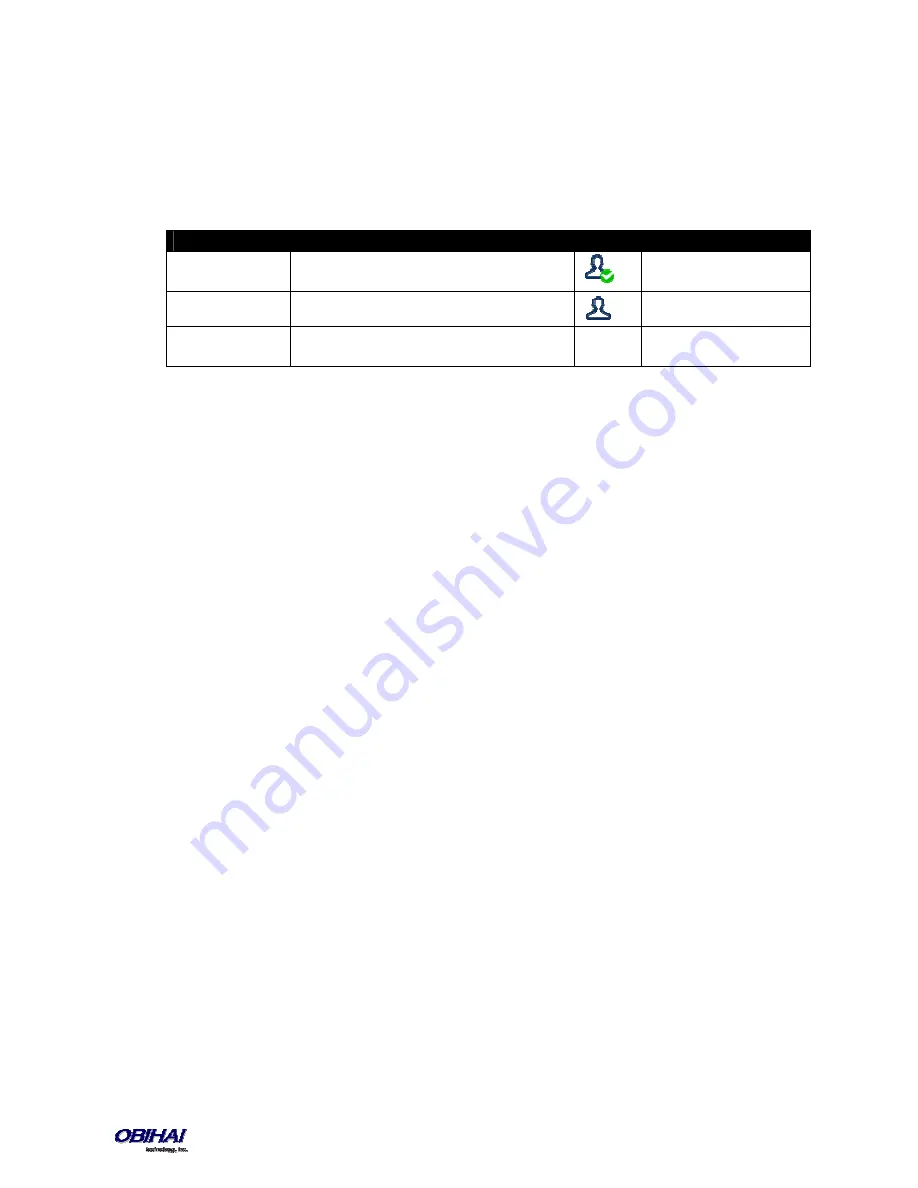
Copyright 2010-2015 Obihai Technology, Inc.
91
value of this subscription can be set with the parameter
ITSP Profile – SIP – Feature
Configuration
::
X_BWHotelingSubscribeExpires
.
There are two ways to access the guest login/logout function:
-
Within the Net Services App, select the SP service, and then select the Hoteling option
-
Define a feature key with the function
Hoteling
(but no more than one hoteling feature key per SP service).
The LED and the icon of the key reflect the current guest login state, as shown in the following table:
Guest Login State
Description
Icon
LED
Guest Logged In
A guest has successfully login. The login
extension is shown on the screen
Solid green
Guest Logged Out
No guest login
Off
Protocol error
Problem reaching the server or subscribing to
the service
Solid orange
When trying to login, the guest will be first prompted to enter the guest extension. After submitting a valid guest
extension, the guest will be further prompted to enter the corresponding password. Once the password is accepted by
the server, the phone screen will show the guest extension in the Call Appearance and Line Monitor keys that are
bound to the SP service. The guest may logout by pressing the hoteling feature key again once, or the server may
logout the guest remotely; the screen will be updated automatically according to the updated guest login state.
Emergency Calls
The administrator can define one or more numbers as emergency numbers by adding the prefix EM# to those numbers
using the
Phone Settings
::
DigitMap
and a corresponding rule in
Phone Settings
::
OutboundCallRoute
to route
those calls to a specific voice service to handle the call. The following example defines an emergency number 911 and
routes the call to go out from SP1 when the number is dialed:
DigitMap
=
(<EM#>911|
other rules
…
)
OutboundCallRoute
=
{(‘EM’#xx.):sp1},
other rules …
The phone detects that you are calling an emergency number if the number to call has the prefix EM# after applying
the phone digit map on the dialed number. It then applies the emergency call treatment to that call for the duration of
the call:
-
You cannot hold or end the call; only the remote party can end it
-
You can start the call with the headset; but you cannot switch to use a headset subsequently after the call is
started. You can only switch between the handset and speakerphone
-
You cannot start or resume any other calls
-
You cannot press the Home or Cancel key to get to the Home screen to start another App
-
Call waiting disabled
-
All the feature keys are disabled
Call Diversion History
(SIP Only). The soft-switch may keep a history of Diversion headers for each call forward transaction as it tries to ring an
extension. A Diversion header is added each time the called extension redirects (or diverts) the call. When an INVITE
message arrives at the OBi1000 after a series of redirections, it may include a history of all the diversion headers (with
the latest one appearing first). The OBi1000 will show the call diversion history in the call item of the Calls App, if
available.
There is no configuration for this feature.






























